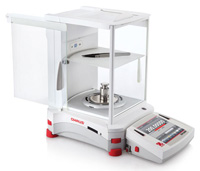| The Home page of ILPI's Safety Data Sheet (SDS) Resource, the leader in SDS information since 1995! | |
| The history and philosophy behind this resource. | |
| A curated collection of books and reference materials concerning Safety Data Sheets and closely related topics. | |
| Paste your plain text SDS into the SDS-Demystifier, and it will be converted into a hypertext-enriched document with links to detailed explanations of each key term. | |
| An extensive list of frequently asked questions about Safety Data Sheets including regulations, content, compliance, and more. | |
| A humorous take on Safety Data Sheet jargon. Fill in the blanks on our entry form to generate a personalized Unsafety Data Sheet to share with your coworkers. | |
| Since 1995, we've maintained this massive curated list of the best places to find Safety Data Sheets on the Internet. | |
| You are here! Way more than a glossary, this hypertext-enhanced resource covers hundreds of SDS-related terms and expert knowledge. Each entry includes both the SDS relevance and links to additional authoritative resources. | |
| Archived results of Safety Data Sheet related polls taken by some of our millions of site visitors | |
| The OSHA regulations behind SDS regulations, including the inspection guidelines and over 400 official interpretations letters under the Hazard Communication Standard | |
| Commercial suppliers of SDS authoring and management software as well as cloud compliance services. | |
| Commercial companies that will create SDS's for your specific needs as well as SDS translation companies. |

Safety signs, banners, and scoreboards? Get yours at Safety Emporium!

Maintain safe operation of forklifts with forklift labels, signs, tags, banners, lockout kits and more from Safety Emporium.
The term mass is often used interchangeably with "weight". Strictly speaking, this is incorrect because weight varies with the force of gravity and mass does not.
For example, an astronaut would be almost weightless in outer space, but his or her mass would be unchanged from that on Earth. Therefore, one can say that mass is an expression of "how much stuff" something has.
Here is a handy conversion calculator for some common and uncommon mass (weight) terms. Each term is defined in the next section.
Additional Info
Many of the items you will find on an Safety Data Sheet come in both English (U.S. Customary System) and metric (International System or SI or cgs) units. The metric system has been adopted by almost every country except the United States. Even in the U.S., scientists and technical people use the metric system because of its ease of use.
| Unit | Equivalent measurements, comments |
|---|---|
| Metric ton (t) | A metric ton is equal to 1,000 |
| Kilogram (kg, kilos) | The prefix "kilo" means 1,000 |
| Gram (g, gm) | A gram is 1/1000th of a kilogram. A gram is equal to the mass of water contained in a cube one cm on each side (one cubic centimeter = 1 cc = 1 cm3 of water weighs 1 gram). |
| Carat (c) | Used primarily for gemstones, one carat = 0.2 gram = 0.00705 ounce. There are 5 carats in a gram. |
| Milligram (mg, mgs) | The prefix "milli" means 1/1000. Therefore, 1 milligram = 0.001 grams, or 1000 mg = 1 g. 1 mg = 1e-6 kg. 1 mg = 3.52e-5 ounces. |
| Microgram (μg, μgs) | The prefix "micro" means 1/1,000 |
| Nanogram (ng, ngs) | The prefix "nano" means 1/1,000 |
| Picogram (pg, pgs) | The prefix "pico" means 1/1,000 |
| Femtogram (fg, fgs) | The prefix "femto" means 1/1,000 |
| attogram (ag, ags) | The prefix "atto" means 1/1,000 |
| Zeptogram (zg, zgs) | The prefix "zepto" means 1/1,000 |
| Ton (long ton) | In the U.S., a long ton = 1.12 short tons = 2,240 pounds = 1.016 metric tons. |
| Ton (short ton) | In the U.S., a ton is 2,000 |
| Pound (lb, lbs) | A pound is an English unit of weight. There are 16 ounces or 7,000 |
| Ounce (oz, oz avdp) | An ounce is equal to 437.5 grains, 1/16 of a pound, or 28.350 grams. The system of having 16 ounces in a pound is called the avoirdupois system. Note:
|
| Dram (dr, dr avdp) | Fairly uncommon. There are 256 drams in a pound. 1 dram = 27.34 grains = 1/16 ounces. Caution: apothecary drams and fluid drams are different from the avoirdupois dram (see previous entry). |
| Grain (lb, lbs) | Fairly uncommon. There are 480 grains in a troy ounce and 7,000 |

Laboratory operations are a breeze with Ohaus analytical balances from Safety Emporium.
SDS Relevance
Be very careful to note the units when reading numbers on a Safety Data Sheet. If you ever perform a calculation of any sort, always remember to write the units next to each number in your calculation and make sure that they cancel properly.
Further Reading
- Unit Mixups have caused a number of incidents, including plane crashes and the loss of a space probe. Watch those units!
- The U.S. Metric Program at the National Institute of Standards.
- More info about the metric system, including prefixes, at ChemTeam.
- The U.S. Metric Association (USMA) has all sorts of useful information and history on the metric system.
- Orders of magnitude for mass at Wikpedia from 10-36 up to 1052 kg.
See also: area units, distance units, energy units, mole, pressure units, temperature units, volume units.